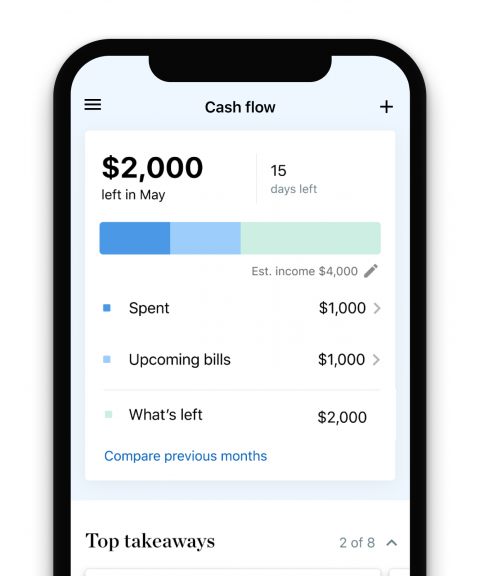Updated on July 2 with the latest JOLTS data from the Bureau of Labor Statistics.
The unemployment rate ticked up to 4% in May from 3.9% in April, according to the jobs report released on June 7 by the Bureau of Labor Statistics (BLS). The unemployment rate had been lower than 4% since February 2022.
Job gains were well above projections for May, with the total coming in at 272,000. The consensus estimated monthly expectation was an increase of 180,000, according to Morningstar, an investing firm.
Job gains were primarily in health care; government; leisure and hospitality; as well as
professional, scientific, and technical services.
What are the weekly jobless claims?
Jobless claims decreased by 6,000 to 233,000 for the week ending June 22, according to the report released on June 26. The claims came in below what economists had anticipated (236,000).
The latest four-week moving average, which measures the number of people filing for unemployment insurance for the first time throughout the previous four weeks — was 236,000, up 3,000 from the previous week’s revised average of 233,000
More on the latest jobless claims, including state unemployment rates and jobless claims data, here.
How many jobs were added in April?
The economy added 175,000 (nonfarm) jobs in April, according to the BLS.
303,000 in March 2024
270,000 in February 2024
256,000 in January 2024
290,000 in December 2023
199,000 in November 2023
150,000 in October 2023
336,000 in September 2023
187,000 in August 2023
187,000 in July 2023
209,000 in June 2023
339,000 in May 2023
253,000 in April 2023
165,000 in March 2023
248,000 in February 2023

What is the current unemployment rate?
The current unemployment rate is 4% for May, down from 3.9% in April. The rate is not dramatically different from unemployment rates during 2023. In May 2023, the unemployment rate was 3.7%.
Is unemployment rising or falling?
The unemployment rate has remained low and stable, fluctuating between 3.4% and 4% since Dec. 2021. The rate increased slightly from April to May.
How to calculate the unemployment rate
The unemployment rate is calculated by dividing the number of unemployed people by the number of people in the labor force. (The labor force is considered the sum of those who are currently working or looking for work.) The result is then multiplied by 100 to get a percentage:
Number of unemployed people / Labor force x 100 = X%, which is the unemployment rate
What is the labor force participation rate?
The labor force participation rate remained largely unchanged from April (62.7%) to May (62.5%), according to the Bureau of Labor Statistics. The labor force participation rate is the percentage of the population that is working or looking for work.
The rate is calculated as the labor force divided by the total population that’s eligible to work. (The Bureau of Labor Statistics defines the total population that’s eligible to work as the “civilian noninstitutional population,” which refers to people ages 16 and older who are not in military service or incarcerated.) The result is multiplied by 100 to get a percentage:
Labor force / Civilian noninstitutional population x 100 = X%, which is the labor force participation rate
Since October 2002, the labor force participation rate was lowest in April 2020 (60.1%) and highest in June 2003 (66.5%), according to BLS data.
How is the job market right now?
In recent months, key labor market indicators — job openings, quit rate and layoffs — showed the tight labor market is beginning to loosen. But continuous job growth combined with consistently below-4% unemployment shows the job market remains resilient.
What does the Job Openings and Labor Turnover Summary report show?
The latest Job Openings and Labor Turnover Summary (JOLTS), released on July 2 shows job openings were 8.1 million in May. The number of openings are down by 1.2 million compared to a year ago according to the report.
7.9 million in April 2024
8.4 million in March 2024.
8.8 million in February 2024
8.7 million in January 2024
8.9 million in December 2023
8.9 million in November 2023
8.7 million in October 2023
9.6 million in September 2023
9.6 million in August 2023
8.8 million in July 2023
9.6 million in June 2023
9.8 million in May 2023
10.1 million in April 2023
The seasonally adjusted job openings rate in May was 4.9% compared to 4.8% in April. By comparison, the job openings rate in May 2023 was 5.6%.
The number of job openings in May declined in accommodation and food services (-147,000) and in private educational services. Openings rose in state and local government, excluding education; durable goods manufacturing; and the federal government. The rate of job openings declined most in the real estate and rental and leasing sector — a 1.2 percentage point decrease. <br>The rate of layoffs in May stayed the same as the April rate at 1.0%, according to the JOLTS report.
What is the quit rate?
The JOLTS report also shows the quit rate in May matched the previous six months at 2.2%. By comparison, in May 2023 the quit rate was 2.6%.
Economists say quit rates are a key factor in the health of employment prospects since quitting shows that workers feel safe making a job switch within their sector or outside it entirely.
The current quit rate is consistent with pre-pandemic levels after peaking at 3% in both Nov. 2021 and April 2022.
Are wages increasing?
Wage growth is moderating from what it was a year ago but is still higher than it was pre-pandemic, according to data from the Federal Reserve Bank of Atlanta. The three-month moving average of median hourly wage growth — when measured over the previous 12 months — has slowed from its peak in the summer of 2022.
For March the three-month wage growth percent change from a year prior was 4.7%, which is 0.3 percentage points lower than February’s rate (5%). By comparison, the percent change for March 2023 from a year prior was 6.4%. If you look back even further, at the percent change for February 2020 from a year prior, the rate was 3.7%.
» MORE: Is the pay gap real?
Below, the Federal Reserve Bank of Atlanta data for March shows a steady decline in the three-month moving average of wage growth compared to the peak in June 2022 and July 2022.
What does the Employment Cost Index Show?
Increases in compensation costs were greater in the first quarter of 2024, compared with the previous quarter, according to the most recent BLS Employment Cost Index, which measures wage and salary growth. Wages and salaries, as well as benefits comprise total compensation costs.
The April 30 report shows compensation costs increased by 1.2% in the first quarter of 2024 compared with the previous quarterly rates in 2023: 0.9% in the fourth quarter; 1.1% in the third quarter; 1.0% in the second quarter; and 1.2% in the first quarter.
But year-over-year measurements show that compensation cost increases in the first quarter of 2024 (4.2%) remain slower than during much of 2023:
December 2023: 4.2%
September 2023: 4.3%
June 2023: 4.5%
March 2023: 4.8%
For the 12-month period ending in March 2024, wages and salaries had a slower increase (4.4%) compared with the 12-month period ending in March 2023 (5%).
Over the same 12-month period, benefit costs also had a slower increase in the 12-month period ending in March (3.7%) compared to the 12-month period ending in March 2023 (4.5%).
Will unemployment rise?
The labor market is still tight, but is also showing some signs of slackening.
The Federal Reserve hiked interest rates 11 times since March 2022 in an effort to bring down inflation, which is expected to eventually lead to a higher unemployment rate. However, the Fed has slowed down; the Central Bank paused rates at all of its meetings since July 2023. And the Fed has indicated it will likely cut interest rates in 2024, but it's unclear exactly when that might happen.
» MORE: What is the minimum wage?
When is the next jobs report?
The next jobs report will show data for June and it will be released on July 5.
(Photo by Spencer Platt/Getty Images News via Getty Images)



